
Digital Shift Knob - Manual - Installation Instructions
Installation Time
30 minutes
Tools Required
- Indy-Cator Shifter Knob
- Cable Assembly and Electronics Box
- Connecting Data Cable
- Clamping Ring
- 10mm Set Screw
- 14mm Set Screw
- Instructions
- Warranty Card
Installation
1. Check to see if the shift-lever boot is connected to the shifter knob. If it is not, simply turn or unscrew the shifter knob until it separates from the shift rod and then remove. If the shift lever boot is connected to the shifter knob, carefully detach the shift-lever boot from the center console. Turn the shifter knob and the shift-lever boot until it detaches from the shift rod, then remove both parts.
2. Separate the shift-lever boot from the shifter knob; they are usually connected with a ring (Figure 3). The ring must be removed carefully with a suitable tool. The shift lever boot can then be separated from the shifter knob.
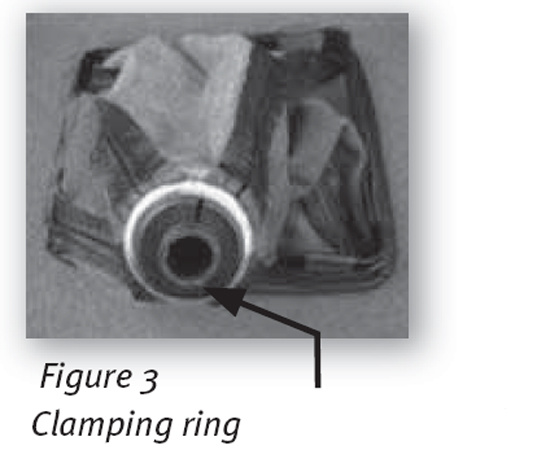
3. Fit the shift-lever boot over the Indy-Cator shifter knob. This applies only to vehicles using this specific factory arrangement. The existing shift-lever boot may not be wide enough. In this case, it should be widened with suitable tools to enable it to be fitted over the bottom end of the Indy Cator shifter knob.
4. It is recommended to position the shifter-lever boot between the shifter knob and clamping ring in order to keep the clamping ring covered with the clamping screw. On some vehicles, this is unfortunately not possible. In such cases, the clamping ring should be positioned over the shift-lever boot.
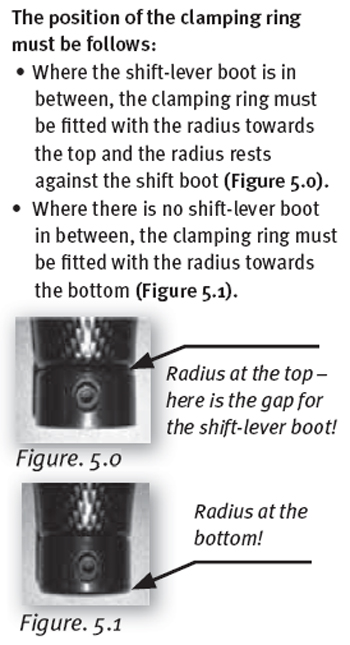
5. Install the complete shifter knob on to the shift rod and align it so that the front is facing the front of the vehicle (in the direction of travel) Push the shifter knob down on to the shift rod against the inner stop in order to prevent it from subsequently loosening. use an Allen wrench to tighten one of the set screws to the shift rod. If the shift rod has a small diameter, use the longer set screw (14mm); with a large shift rod diameter, the shorter set screw (10mm) should be used.
6. Plug the connecting data cable into the side of the small electronics box and attache it - the adhesive strip is provided on one side of the box for this purpose - to a point that is protected from being bumped or moved in any way.
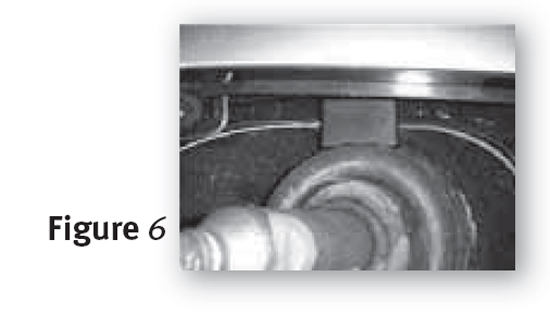
7. It is recommended that the electronics box is attached to a flat surface (GASLOCK logo at the top); the direction of the cable is irrelevant. The electronics box should not be mounted near heating elements of air duct to prevent heating or cooling. It should not be in a location that is subject to cooling due to drafts or air conditioning vents. Take care not to mount the electronics box to any part of the vehicle subject to getting hot. Under certain circumstances, the heat can deform the box tithe extent that the position of it can change. According to our experience, this preferred mounting position ensures maximum accuracy and stability without incorrect gear displays.
8. After initial use, the position of the shifter knob must not be altered (do not turn, etc) because this can cause malfunctions. If this should happen, the shifter knob must be reprogrammed.
9. Connect the red wire to a power cable that is only energizer ("hot") when the ignition is on (such as power to the cigarette lighter or similar device) and connect the black wire to a suitable ground. Be careful routing these wires to prevent any subsequent damage. Installation by experienced persons or by a specialized vehicle repair shop is recommended.
10. After turning on the car's ignition and the Indy-Cator is on, the user is always asked whether the programming procedure should be started. When the two segments at the top left of the display flash (Fig 7.13) put the car into first gear. If the car is already in first gear, proceed to the next step. The segments at the bottom right of the display will then start to flash (Fig 7.14) which tell you to put the car into fourth gear. When you do this, the system remembers the gearshift positions of these gears. You are then asked again to reselect gears 1 & 4. If this is successful, the programming procedure can start. If gears 1 & 4 are not selected at this time, the programming procedure is stopped.

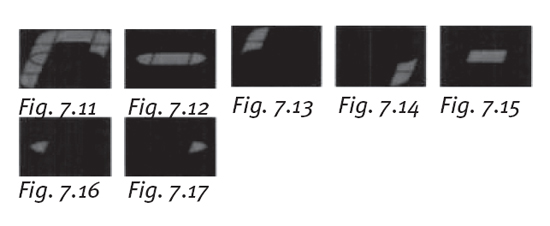
11. Switch on the ignition! All gear positions of the system are displayed by a number or segment flashing on the display in sequence. Then, the indicated gear must be selected by the user. Gear selection takes place in two phases as the vehicle is positioned on two different gradients. In the first phase, the vehicle should be facing forward on a gradient and positioned in the opposite direction of the second phase.
12. The end of the first phase is indicated by the display of a line (Fig 7.12) Between the two phases, you have about 60 seconds to change the position of the vehicle. The lapse of this time is indicated on the display by a downward count from 9-0. The gear positions are taught in the phases in the following order: gears 1 to 6 (Figs 7.2 - 7.7) reverse gear (Fig 7.11) center neutral position (Fig 7.15), left neutral position (Fig 7.16) and right neutral position (7.17)
13. If the vehicle does not have a sixth gear, obviously it cannot be selected. When requested, in the first phase to select sixth gear, the gear shift lever should remain in the previous position and not moved. The system recognizes the shift lever has not moved and skips to the second phase. This also applies to the absence of a fifth gear. Once the programming phase has been completed, the system stores the gear positions and subsequently starts to recognize the gear position (flashing ceases).However, a programming teach phase can be initiated each time the system is switched on by putting the gear shift lever in first and fourth gears twice. The programming procedure can be interrupted by switching off the power supply by turning off the ignition. This can be helpful if errors are made during the procedure.
14.Each time the ignition is switched on, the display flashes for several seconds. If the first and fourth gears are not selected within the given time (as described) the electronic display changes to a normal mode the last programming assignment is displayed.
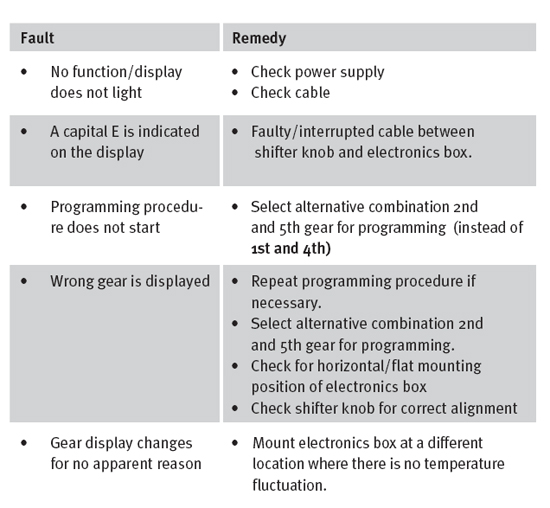
Installation instructions provided by Manufacturer.

